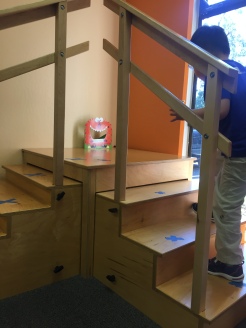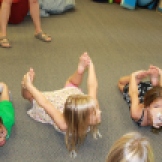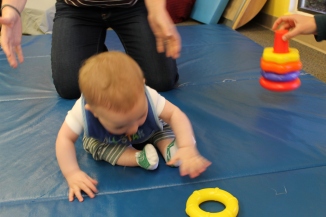
Looking for easy and fun activities for your kiddos to do at home? All you need is painter’s tape and a little imagination! Here are four different gross motor activities with simple set ups to work on balance, strength, motor planning, coordination, and body awareness.
- Weaving through spider web: Use a hallway to span tape from one wall to the next in a varied pattern as seen in the picture. Have your kiddo step over, army crawl under, and crouch through to get to the other side. Giving them a chance to problem solve how to get from one end to the other works on motor planning and being able to adjust their body and avoid contact with the tape challenges their awareness of their body in space. Here are some posts on painter’s tape spider webs, and jungle vines (just adapt for painters tape)!
- Walk the line: walk forwards, backwards, sideways: The beauty of painter’s tape is that it can easily be applied and removed from so many surfaces. Regardless of your floor type, you can create patterns on the ground for your kiddo to walk across. This challenges their balance and ability to move with a narrower base of support. You can also have them hop on one foot down the line or hop back and forth between lines to build strength and power. You can add more variety by having your child walk backwards or sideways! Here are some other post on similar ideas such as balance beams, more balance beams, and jumping paths – just adapt and use painter’s tape!
- Spider web walking: In addition to lines, you can create a spider web out of tape and challenge your child to walk on the line to get different critters within the boxes or you can have them jump from box to box to avoid touching the spider web! Here is a longer post on this idea!
- Tic tac toss: Take the tic tac toe game off the paper and turn it life-size by taping a grid on the ground. Use two different color bean bags to duel it out amongst family members or friends. If you want to add more physical challenge you can incorporate similar concepts to what is explained above including walking heel to toe to your chosen box or hop from square to square to drop it in rather than tossing.
Now grab some tape and let the fun begin!

















